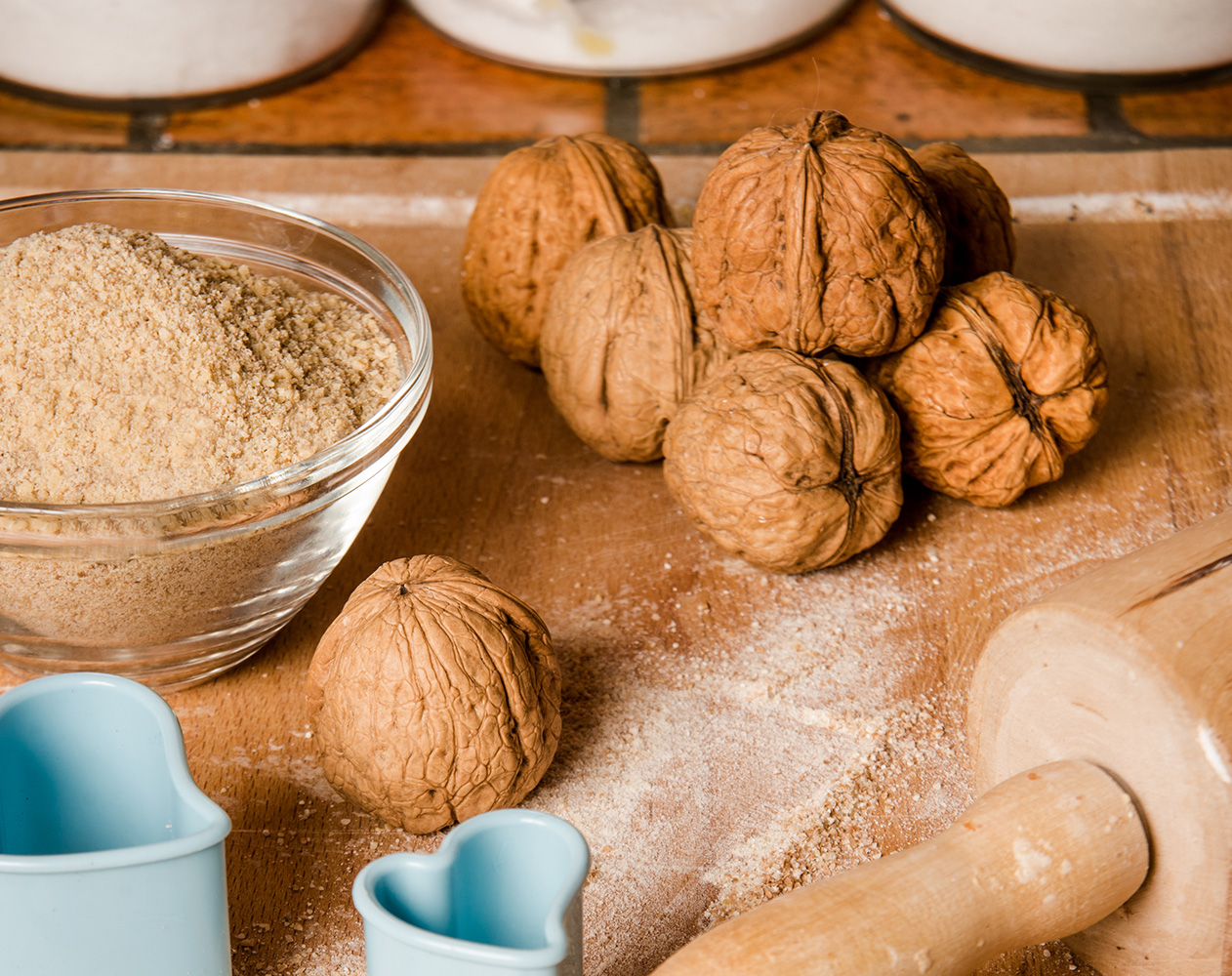Walnut leaves in herbalist shops
The walnut is a precious plant, of which virtually all the parts can be used.
In addition to its delicious nuts and its wood, which is used to make fine furniture, walnut leaves are also precious elements
with therapeutic properties.
In the past, especially, they were essential for preparing “old wives’ remedies”: whether fresh or dried, walnut leaves, thanks to their properties, can be used for herbal teas and poultices, which help to alleviate or treat specific ailments.
For example, an infusion of walnut leaves was recommended as a mouth wash to treat mouth sores and inflammation. The same infusion was used as a gargle for sore throats or tonsillitis.
For a fever, an infusion of these dried and finely chopped leaves was recommended until the symptoms passed.
To combat jaundice and repair the liver, “medicinal wine” was taken, prepared by infusing walnut leaves in a litre of white wine for several days.
In the event of cuts, sores or blisters, a poultice of washed and pressed walnut leaves was applied to aid the healing process.
To treat conjunctivitis or alleviate swelling and redness of the eyes, an infusion was prepared with which compresses were made using cotton wool.
Another use for infusions of walnut leaves was suggested to treat dermatitis, irritation and reddening of the skin, or as a daily footbath to alleviate fatigue and swelling of the feet.
Walnut leaves were also useful for treating animals: a method of keeping parasites away from dogs was to apply a layer of fresh leaves on the floor, making sure to change them frequently to maintain their efficacy.
Having a walnut tree near your house was always useful both as a source of food and herbal treatments!
Sources:
- Tina Cecchini, Encyclopaedia of medicinal herbs, De Vecchi Editore, 1967



 0131.887213
0131.887213 Carrello
⟨0⟩
Carrello
⟨0⟩













